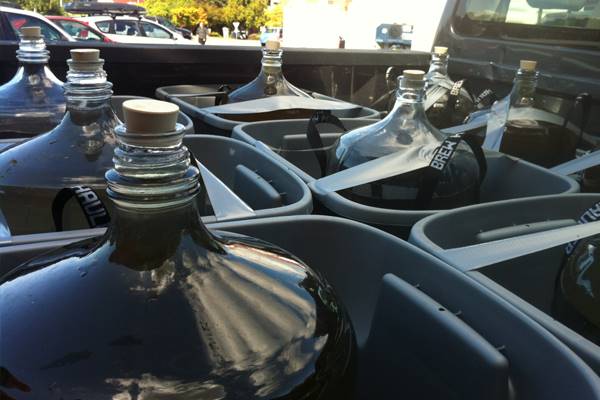Highway runoff lethal to young coho salmon; filters could help
Some anglers swear that the fish bite better after a storm, but in streams that drain stormwater from nearby roadways, a bit of rain could be deadly to anything living within.
Research from Washington State University, NOAA Fisheries and the U.S. Fish and Wildlife Service found that stormwater runoff from highways is toxic enough to kill juvenile salmon just 12 hours after exposure. However, stormwater filtered through soil filters is utterly harmless to the fish, raising hope for improved urban runoff management.
“Traditionally, stormwater science has been all about the engineering, hydrology side of things,” said Jenifer McIntyre, postdoctoral researcher at WSU. “Our interest in it, as aquatic biologists, is that we want to let the animals tell us if something’s working.”
Juvenile coho salmon and their macroinvertebrate prey certainly let the researchers know which methods worked. At WSU’s lab in Puyallup, the researchers tested four groups, each with three coho-stocked aquaria: the control group contained regular water, another group was contaminated with unfiltered runoff, and the last two contained runoff processed through “bioretention media” with and without plants.
The bioretention media works like natural filter. The bulk of the system is made up of sand and compost, with some gravel at the bottom to improve drainage. Shredded bark and residual water treatment sediment comprise the last quarter of the media. To test the system, the researchers used runoff gathered from a Seattle highway after six separate storm events.
“We knew it would contain the worst of the worst,” McIntyre said. “It would be the most concentrated, and contain a lot of the chemicals we know could be a problem.”

Highway runoff collected for the experiment was transported in glass carboys. (Credit: Jenifer McIntyre)
Basic toxicity testing requires four days of exposure to the contaminant in question. The ill-fated salmon and mayfly nymphs only made it an eighth of the way through that process. Within 12 hours, “even under otherwise ideal conditions,” everything in the aquaria exposed to unfiltered runoff had died, McIntyre said. The results were so destructive that the researchers checked to ensure the toxicity of their runoff wasn’t a fluke.
“We looked at the chemistry later; this wasn’t a particularly strong storm,” McIntyre said. “It didn’t have extra-high levels of the contaminants we were studying. This is just how toxic [the runoff] was.”
On the other hand, the fish and macroinvertebrates in aquaria with filtered runoff — plant presence notwithstanding — turned out just fine, failing even to exhibit the various non-lethal side effects that highway runoff is known for, such as damage to the cardiovascular and reproductive systems. So while highway runoff possesses alarmingly high toxicity, the bioretention media does its job and then some.
McIntyre said her study, along with other stormwater research, is informing Washington’s legislative process. State policy is now requiring some new developments to include rain gardens, special sediment media and other technology. The Department of Transportation is retrofitting one highway with runoff mitigation systems, and ports are beginning to take up similar measures.
“In the Puget Sound region, stormwater runoff is being recognized as an increasingly important water quality issue, especially because we do have the salmon here that are possibly more sensitive,” McIntyre said. “They’ve been taking it seriously for a while, but their toolbox is expanding now that this type of research is taking place.”



0 comments